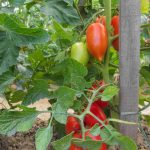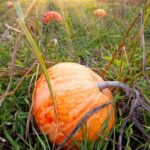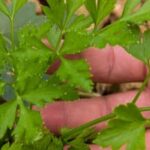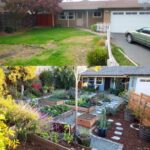Seeds are the foundation of any successful vegetable garden, as they hold the potential for a bountiful harvest. Choosing the right seeds and understanding their characteristics is essential for a thriving garden. In this article, we will explore the significance of seeds in vegetable gardening, from selecting the best varieties to nurturing young plants for optimal growth.
When it comes to starting your vegetable garden, selecting the right seeds is crucial. Understanding the different varieties and their unique characteristics can make a significant impact on the success of your garden. We will delve into tips for starting seeds indoors, providing them with the ideal growing conditions for strong and healthy seedlings.
In addition to starting seeds indoors, we will also discuss direct seeding in the garden and proper techniques for planting seeds outdoors. It’s important to understand seed germination and how the science behind seed sprouting plays a vital role in the development of your vegetable garden. Furthermore, we will explore techniques for maintaining healthy seedlings and addressing common issues that may arise during the seed germination process.
Choosing the Right Seeds
Varieties and Characteristics
When choosing seeds for your vegetable garden, it’s important to consider factors such as climate, soil type, and available space. Different varieties of vegetables have specific requirements for optimal growth, so selecting seeds that are well-suited to your local conditions is key. Additionally, considering the size and yield of the mature plants is important for planning your garden layout.
Open-Pollinated vs. Hybrid Seeds
It’s also important to understand the difference between open-pollinated and hybrid seeds. Open-pollinated seeds come from plants that are pollinated naturally by insects, birds, wind, or other natural mechanisms. These seeds will produce offspring with traits similar to those of the parent plant. On the other hand, hybrid seeds are produced by cross-pollinating two different varieties to create a plant with specific desirable traits, such as disease resistance or improved yield.
Non-Gmo Seeds
For those concerned about genetically modified organisms (GMOs), non-GMO seeds are an important consideration. Non-GMO seeds come from plants that have not been genetically modified in any way. Choosing non-GMO seeds can help ensure that you are growing vegetables in their purest form without any genetic alterations.
Understanding these different seed varieties and their characteristics will help you make informed decisions when selecting seeds for your vegetable garden. By taking into account factors such as climate suitability, open-pollinated versus hybrid options, and GMO concerns, you can choose the right seeds that will thrive in your garden and provide healthy and bountiful harvests.
Tips for Starting Seeds Indoors
Starting seeds indoors is a great way to get a head start on the growing season and ensure a successful vegetable garden. When choosing seeds for vegetable gardens, it’s important to consider factors such as the climate, soil type, and available space. By starting seeds indoors, you can control the growing conditions and give your plants the best possible start.
One of the most important factors in starting seeds indoors is providing the ideal growing conditions. This includes using a good quality seed-starting mix, ensuring proper drainage, and providing adequate light and warmth. It’s also important to follow the specific planting instructions for each type of seed, as some may require special treatments such as soaking or scarification before planting.
In addition to providing the right growing conditions, it’s essential to monitor the seeds closely for signs of germination and growth. Once the seedlings have developed their first set of true leaves, they can be transplanted into individual pots to continue growing until they are ready to be planted outdoors. With proper care and attention, starting seeds indoors can result in strong, healthy plants that will thrive in your vegetable garden.
| Seed Starting Tips | Recommended Guidelines |
|---|---|
| Seed-Starting Mix | Use a high-quality mix with good drainage |
| Light and Warmth | Provide adequate light and warmth for optimal growth |
| Monitoring Growth | Keep a close eye on seeds for signs of germination and growth |
Direct Seeding in the Garden
When it comes to starting a vegetable garden, direct seeding is a popular and effective method for planting seeds directly into the soil of your garden. This technique eliminates the need for transplanting seedlings, allowing the seeds to grow and flourish in their intended location right from the start. Here are some tips and techniques for successfully direct seeding in your vegetable garden:
1. Choose the Right Location: Select a sunny area with well-drained soil for direct seeding. Avoid areas with compacted soil or heavy shade, as these conditions can hinder the growth of your vegetable seeds.
2. Prepare the Soil: Before planting your seeds, it’s essential to prepare the soil by loosening it to a depth of at least 6 inches. Remove any debris or weeds that may impede seed germination and growth.
3. Planting Depth and Spacing: Different types of vegetables require varying planting depths and spacing. Consult the seed packet or gardening resources to determine the appropriate depth and spacing for each type of seed you plan to plant.
Once you have planted your seeds using these proper techniques, be sure to water them gently but thoroughly immediately after planting to ensure good soil-to-seed contact. With some patience and care, you’ll soon see your seeds sprout and grow into healthy vegetable plants that will provide a bountiful harvest for you and your family.
Understanding Seed Germination
When it comes to vegetable gardening, understanding the process of seed germination is crucial for a successful harvest. Seed germination is the basic process of a seed developing into a new plant and there are certain factors that are essential for this process to occur. Here are some key points to consider when it comes to understanding seed germination in your vegetable garden:
- Water: Adequate moisture is essential for seeds to germinate. Without enough water, seeds will not be able to break dormancy and start sprouting.
- Temperature: Different seeds have different temperature requirements for germination. Some might require warmer temperatures while others might need cooler conditions. It is important to research the specific needs of the seeds you are planting.
- Soil: The quality of the soil and its composition can greatly affect seed germination. A loose, well-draining soil with plenty of organic matter is ideal for most seeds.
In addition to these factors, it’s important to provide the right environment and care for your seeds during the germination process. Paying attention to these details will help ensure that your seeds sprout successfully and grow into healthy plants, ultimately leading to a bountiful vegetable garden.
Understanding the science behind seed germination can also help you troubleshoot any potential issues that may arise during this critical stage of plant growth. By providing the ideal conditions and care for your seeds, you can set the stage for a successful vegetable garden filled with an abundance of fresh produce from the seeds you selected and nurtured.
Maintaining Healthy Seedlings
Once your vegetable garden seeds have sprouted and you have healthy seedlings, it is crucial to continue providing the care they need to thrive. Proper nurturing and care for young plants will ensure a successful transition from indoor seed starting to outdoor planting.
One important aspect of maintaining healthy seedlings is to provide adequate light. Make sure your seedlings receive at least 12-16 hours of direct sunlight each day. If natural sunlight is insufficient, consider using grow lights to supplement the light requirements of the seedlings.
Proper watering is also essential for nurturing young plants. Overwatering can lead to dampening off, a common fungal disease that affects seedlings, while underwatering can cause stress and stunted growth. It’s important to water the seedlings thoroughly but allow the soil to dry out slightly between waterings.
| Aspect | Information |
|---|---|
| Light requirements | 12-16 hours of direct sunlight or use grow lights |
| Watering | Adequate watering without overwatering or underwatering |
In addition, providing proper air circulation, maintaining appropriate temperature levels, and ensuring sufficient nutrients through fertilization are all vital in nurturing and caring for young vegetable plants. By following these practices, you can help your seedlings develop into robust plants ready for transplanting into your outdoor garden. Remember, attentive care at this stage will set the foundation for a successful vegetable garden later on.
Seed Saving
Understanding the Importance of Seed Saving
Saving seeds from your vegetable garden not only allows you to continue growing your favorite varieties year after year, but it also helps to preserve plant diversity. By saving seeds, you are helping to maintain genetic diversity within plant species, which is essential for ensuring the resilience and adaptability of crops in the face of environmental changes. Additionally, seed saving can be a cost-effective way to continue gardening, as you won’t need to purchase new seeds every season.
Harvesting Seeds
When it comes to harvesting seeds from your vegetables, it’s important to do so at the right time. In general, allow the fruits or vegetables to fully ripen on the plant before collecting the seeds.
For example, tomato seeds should be harvested from fully ripe tomatoes, while lettuce seeds can be collected once the plant bolts and produces seed heads. Once you’ve harvested the seeds, remove them from the fruits or vegetables and allow them to air dry completely before storing.
Proper Storage Practices
To ensure that your saved seeds remain viable for future planting, proper storage is crucial. Store seeds in a cool, dark, and dry environment – such as a glass jar or airtight container placed in a refrigerator or freezer. Be sure to label each container with the type of seed and the date it was collected.
Some seeds may require additional steps before storage, such as fermenting (for removing gel coatings) or stratification (exposing them to cold temperatures). By following these practices, you can successfully save and store seeds for future vegetable gardens.
Troubleshooting Common Seed-Related Issues
Even with the best intentions and care, gardeners may encounter common seed-related issues when trying to germinate seeds for vegetable gardens. One issue that many gardeners face is poor germination, which can be caused by several factors such as old or low-quality seeds, incorrect planting depth, irregular watering, or unsuitable temperature and light conditions.
To address this issue, it’s essential to select high-quality seeds from reputable sources and follow the proper planting guidelines for each type of vegetable. Additionally, maintaining consistent moisture levels and providing the right environmental conditions can greatly improve germination rates.
Another common problem in seed germination is damping off, a fungal disease that affects young seedlings and can cause them to wilt and die. Damping off is often a result of overly wet growing medium and poor air circulation.
To prevent damping off, it’s important to start with clean containers and soilless starting mix, as well as ensure proper ventilation by using a fan or placing seedlings in an area with good air circulation. It’s also crucial to water seedlings from the bottom rather than overhead to avoid creating excessively moist conditions that promote fungal growth.
Furthermore, some gardeners may encounter issues with weak or leggy seedlings, which can be caused by insufficient light or improper temperature conditions during the germination process. When starting seeds indoors, it’s important to provide adequate light either through natural sunlight or grow lights to promote sturdy growth.
Maintaining consistent temperature levels is also critical for healthy seedling development. By addressing these common seed-related issues through proper care and attention to detail, gardeners can improve their chances of successfully growing vegetable plants from seeds for their gardens.
Conclusion
In conclusion, the success of a bountiful vegetable garden lies in the careful selection and care of seeds for vegetable gardens. By understanding the importance of seeds and their characteristics, gardeners can make informed choices when it comes to choosing the right varieties for their gardening needs. Whether starting seeds indoors or directly seeding in the garden, providing ideal growing conditions and proper techniques are crucial for seed germination and healthy plant growth.
Furthermore, nurturing and caring for young plants is essential in maintaining healthy seedlings. Providing adequate water, sunlight, and nutrients will contribute to strong and vigorous plants that will ultimately yield an abundant harvest. Additionally, through seed saving, gardeners can ensure a sustainable source of seeds for future plantings, allowing them to continue to enjoy their favorite varieties year after year.
Overall, by understanding the science behind seed sprouting and addressing potential issues that may arise during the germination process, gardeners can encourage a successful and thriving vegetable garden. With patience, dedication, and proper care, the rewards of a flourishing vegetable garden grown from carefully selected seeds are well worth the effort. So whether you’re a seasoned gardener or just starting out, remember that it all begins with choosing and caring for the right seeds for your vegetable garden.
Frequently Asked Questions
What Is the Easiest Vegetable Seed to Grow?
The easiest vegetable seed to grow is generally considered to be the zucchini or cucumber. These plants are relatively low-maintenance and can thrive in various types of soil and sunlight conditions, making them ideal for beginner gardeners.
When Should I Start Seeds for My Vegetable Garden?
The timing for starting seeds for your vegetable garden depends on the specific plant and your local climate. In general, most seeds should be started indoors 4-6 weeks before the last expected frost date in your area. This allows the seedlings to be ready for transplanting once the weather warms up.
What Is the Quickest Vegetable to Grow From Seed?
The quickest vegetable to grow from seed is typically radishes. These fast-growing plants can go from seed to harvest in as little as 3-4 weeks, making them a popular choice for gardeners looking for a relatively quick turnaround on their crops.

If you’re looking to get into vegetable gardening, or are just looking for some tips on how to make your current garden better, then you’ve come to the right place! My name is Ethel and I have been gardening for years. In this blog, I’m going to share with you some of my best tips on how to create a successful vegetable garden.





